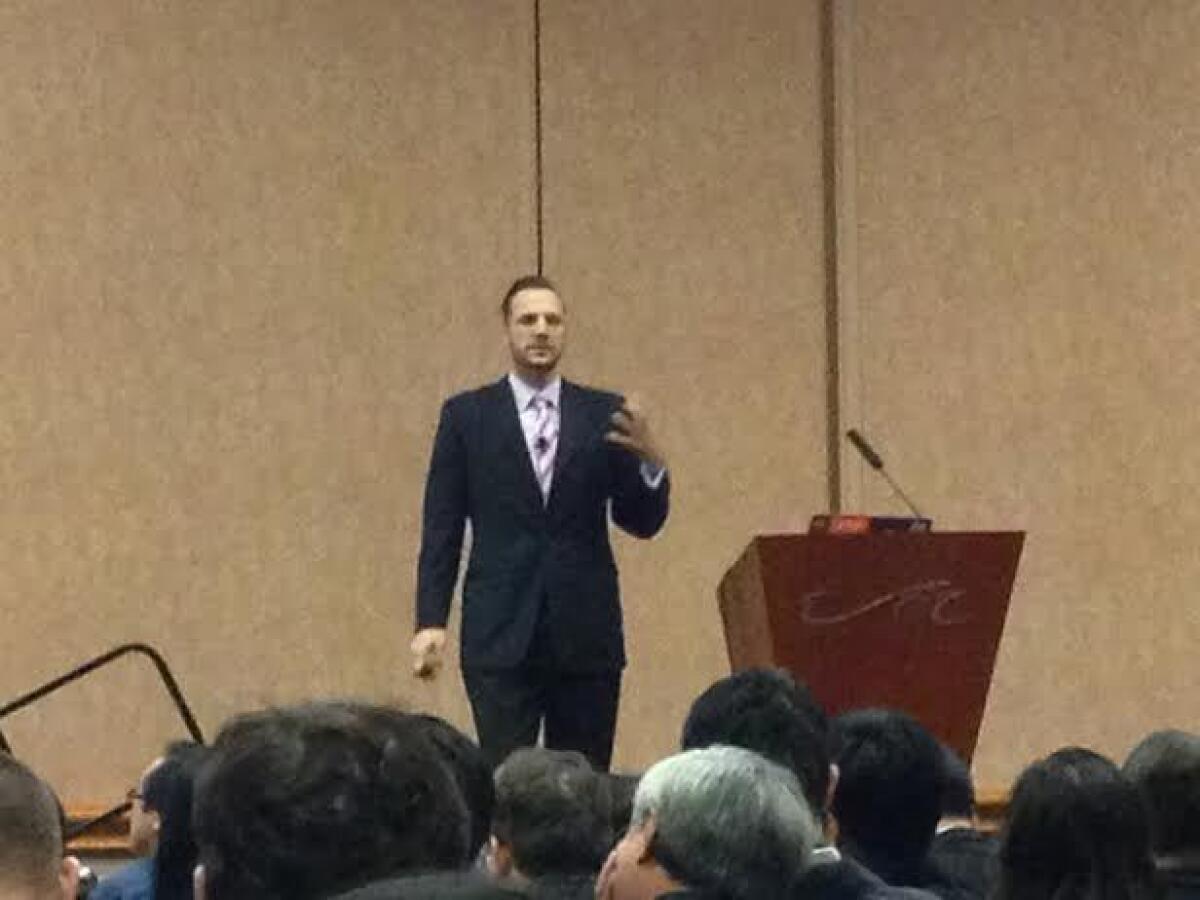CES 2014: Sensors, broadband move consumers into “Age of Autonomy”

- Share via
LAS VEGAS -- A big theme of the International Consumer Electronics Show this year is the “Internet of things.” But even as that trend takes hold, it’s creating another dynamic that one pundit has dubbed the “Age of Autonomy.”
Shawn DuBravac, chief economist for the Consumer Electronics Assn., said in a press presentation on Sunday that as the number of gadgets in our lives expands, they are increasingly talking directly to each other and making decisions without consulting us pesky humans.
This is either a thrilling new evolution or a creepy, Terminator/Skynet-like development, depending on your perspective. But either way, it’s here, and there’s probably not much you can do it about it.
CES 2014: Follow our full coverage of the Consumer Electronics Show
This “Age of Autonomy” is the result of the costs of sensors plunging, leading manufacturers to place them in every product imaginable. At the same time, faster connectivity and processing is allowing gadgets to understand that information and make adjustments without humans getting involved.
Like a thermostat that automatically adjusts the temperature based on your patterns. Or a car’s cruise control that adjusts the speed up or down based on the number of cars nearby or road conditions.
“Ten years ago, technology was about doing things in a static way,” DuBravac said. “Now we’re moving toward a more dynamic experience. We’re taking advantage of information as it changes, and then using that to change what the experience does for you.”
Part of this is just practical necessity. We have so many gadgets in our lives, we can’t possibly manage them all, or change settings based on the information they give us. We have to let gadgets do that automatically, DuBravac said.
But gadget makers also hope this will create a better overall experience since the devices are more likely to constantly leverage the data they gather.
Imagine, DuBravac said, that one day Netflix is able to access a biofeedback device you wear that tells the service whether you are stressed or happy. Or the thermostat in your house. Or it uses the camera on your TV to count the number of people in your living room.
Could all this extra data let Netflix decide with even more precision what movie you want to watch at that very moment?
“By sharing more of my data I might be able to get a richer experience,” DuBravac said.
ALSO:
DreamWorks Animation partners with Fuhu on new tablet
CES 2014: Consumer electronics show to feature ‘Internet of things’
Ford to debut C-Max solar concept car at Consumer Electronics Show
chris.obrien@latimes.com







